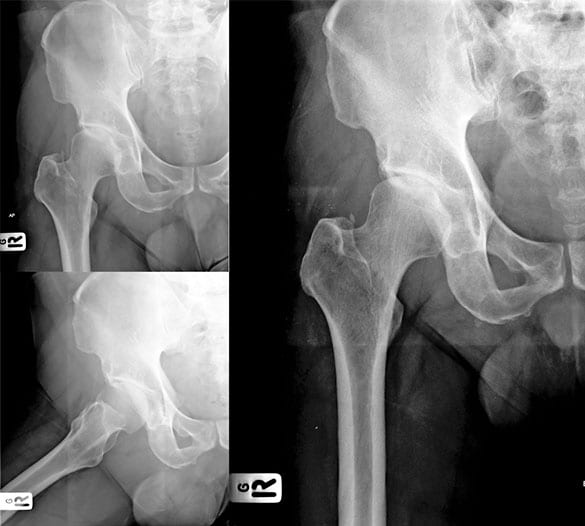
At LA Orthopedic Group, Hip Dysplasia can be managed with minimally invasive approaches.
The hip is one of the body’s ball-and-socket joints. When fitted together properly, a person experiences stability when standing, walking, and moving. If dysplasia develops, however, symptoms may appear and impair mobility and cause discomfort.
- Hip dysplasia can develop at birth or gradually over time
- Pain can make everyday activities difficult
CONTACT US TODAY
What it Is
Dysplasia is a condition concerning one or more factors that affect the fit of the femoral head into the hip socket. Ligaments, membranes, and cartilage all work together to create smooth and painless movement of this ball-and-socket joint. Most cases of dysplasia are due to a shallow socket, leaving the entire joint vulnerable. The femoral head requires adequate coverage and access to the lubrication and support gained from well-developed growth. When the socket is too shallow to provide the necessary housing for the head of the femoral bone, then symptoms will begin to show themselves, particularly pain during everyday activities.
Common Signs of the Condition
People who suffer from dysplasia may experience a range of symptoms. Infants diagnosed with the disorder may seem to have one leg that is longer than the other, for example. Older children or teens might develop a noticeable limp or lack fluid movements due to weakened muscles or pain. Certain activities may trigger painful side effects or a sense of instability in some adults as well. Pain can be localized in the groin, side, or back, and might intensify in nature as the condition goes untreated. Others may experience popping sensations or a clicking sound.


Typical Diagnosis
In adults, an x-ray can be performed to identify a shallow hip socket. This approach usually suffices in determining severity of the dysplasia. Information can be ascertained through assessments and measurements of certain areas of the hip and femoral head. MRIs may be used to detect cartilage deterioration. The results of these imaging tests provide the healthcare professional with the information needed to develop an appropriate treatment plan.
Causes and Treatments
Some forms of dysplasia are present from birth or early childhood. Others develop over time. A crowded womb, for instance, may be the reason a fetus’s hip joint doesn’t mold together properly. A soft brace can be used following birth to help encourage normal growth. If dysplasia persists into adulthood, a risk for tears and osteoarthritis become a possibility. A surgical approach is generally recommended for youths and adults. The goal of these procedures is to attempt a better fit or adjust the physical relationship between the hip socket and femoral head. In cases where too much deterioration has occurred, a hip replacement may be indicated for treatment.
Experiencing hip displacement, or dysplasia, can have painful symptoms. With an accurate diagnosis and pursuing indicated treatment, however, it’s possible to improve quality of life and resume normal daily activities.




